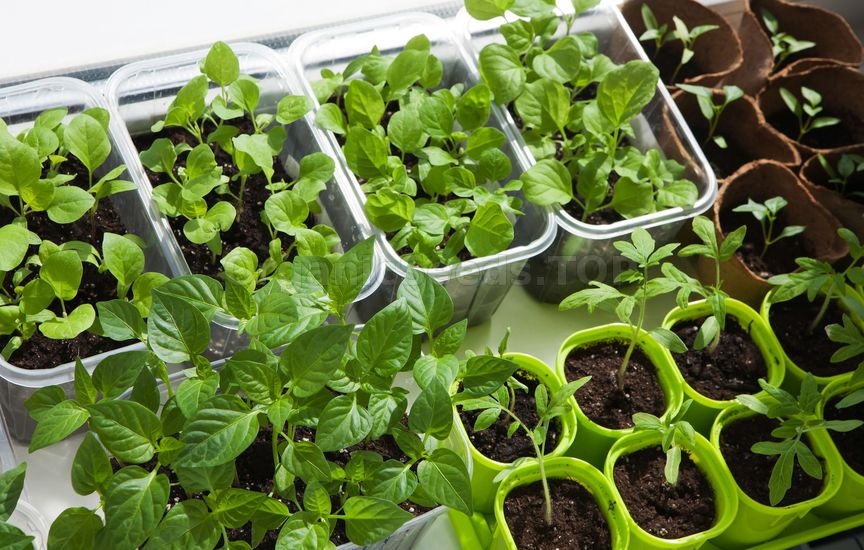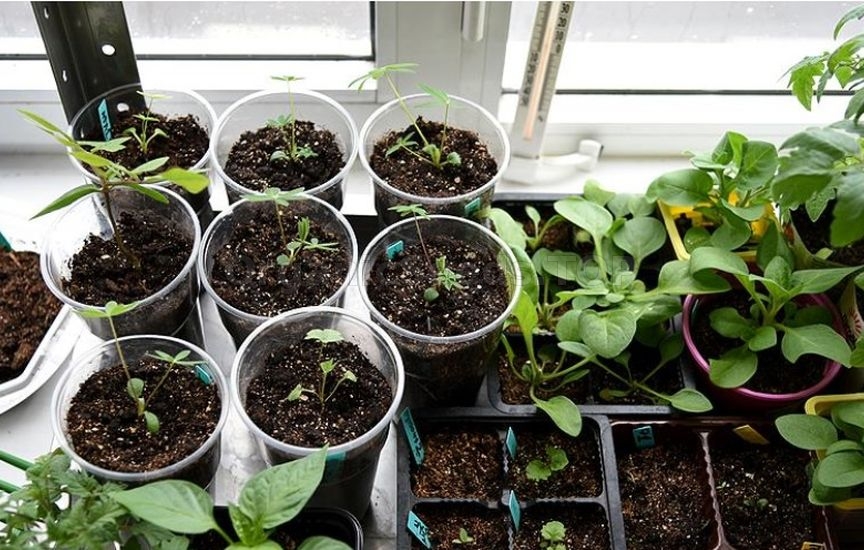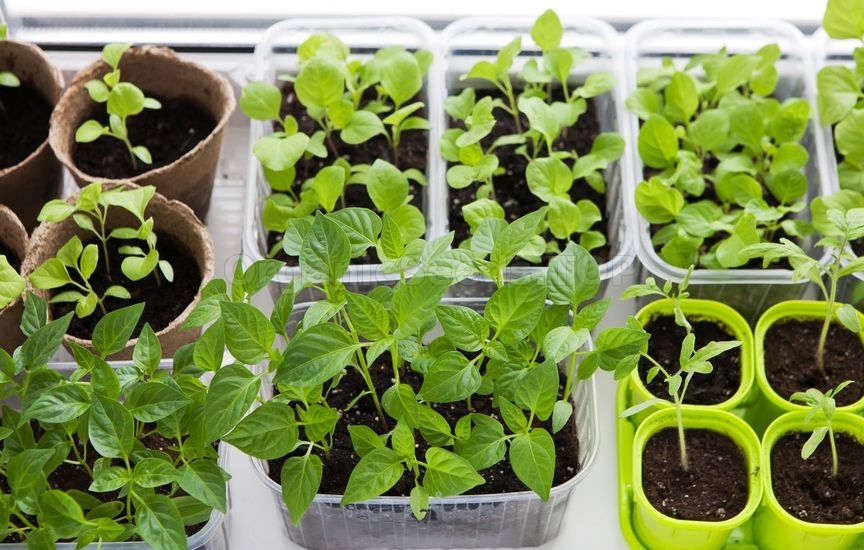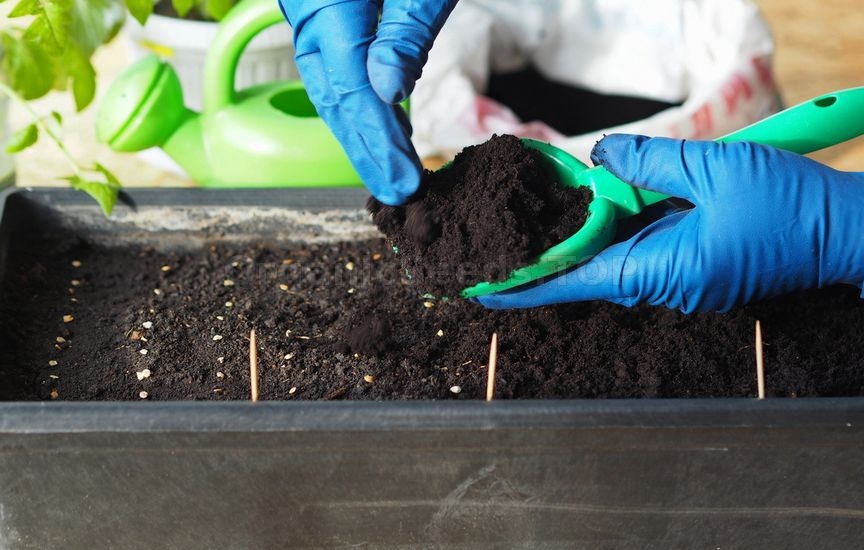In February, gardeners and gardeners begin certain work, which will gradually develop into spring. On the one hand, severe frosts can still strike. On the other hand, daylight hours increase, frosts alternate with thaws and clear days. Some crops are already sown for seedlings, for others a substrate and containers are being prepared. An experienced gardener from the Petrikovskaya UTC tells about the worries of February.

Checking seeds for germination
Although it is only mid-February now, gardeners are already beginning to sow seeds of certain vegetable crops for seedlings in a greenhouse or greenhouse.
– What are the advantages of such an early sowing in February?
– The main advantage is getting high yields in the early stages. And if you fail to get seedlings, by the spring there will be enough time to re-sow. In addition, such seedlings are less affected by diseases. Regarding crops that can be sown for seedlings in February, these are late varieties of white cabbage, celery, tomatoes, eggplant, mid-season and late varieties of sweet pepper.
- Where should a gardener or summer resident start?
- First of all, you need to carry out one important procedure - to check the seeds for germination. You can do this with sprouting. To do this, take a damp napkin, spread the seeds on it and cover with the same napkin on top. Leave the seeds in napkins in a room with a temperature of 18-22 ° C and moisten from time to time so that the napkin does not dry out. Each crop has its own period of time from sowing to germination. Determine how much time is needed in your particular case, and then check which seeds have hatched.
Where to get soil?
 Vasily notes that the substrate should be light - air and moisture permeable.
- Soil acidity - pH 5.5-6.5. According to mechanical properties - the earth should be loose, crumbly. It is most convenient to buy a ready-made substrate “for growing seedlings” in a specialized store. Most of them are peat based.
- Please tell us how to properly prepare the soil for sowing seeds for seedlings?
– The substrate ready for sowing should be moderately moist. If you need to dry it, pour it into a basin or other open flat container so that excess moisture evaporates. You can decontaminate the soil if you want to avoid blackleg and other seedling diseases. To do this, expose the substrate to frost for several days, but it is more reliable to use special preparations (fungicides), for example, Previkur, etc. Water the soil with the solution a few days before sowing.
Vasily notes that the substrate should be light - air and moisture permeable.
- Soil acidity - pH 5.5-6.5. According to mechanical properties - the earth should be loose, crumbly. It is most convenient to buy a ready-made substrate “for growing seedlings” in a specialized store. Most of them are peat based.
- Please tell us how to properly prepare the soil for sowing seeds for seedlings?
– The substrate ready for sowing should be moderately moist. If you need to dry it, pour it into a basin or other open flat container so that excess moisture evaporates. You can decontaminate the soil if you want to avoid blackleg and other seedling diseases. To do this, expose the substrate to frost for several days, but it is more reliable to use special preparations (fungicides), for example, Previkur, etc. Water the soil with the solution a few days before sowing.
What is the best way to grow seedlings?
 Vasily Petrovich advises:
- If you grow seedlings to the stage of 1-2 true leaves, and then transplant them (dive) into large containers, then you can sow them into small shallow containers - this is similar to sowing plants in rows in a garden bed. And then you will need to transplant the plants into cassettes, peat cups or containers.
You can grow seedlings without picking. Then you can use cassettes or containers, it is very convenient to grow tomatoes in disposable cups. Immediately sow 1-2 seeds in them.
There is no particular need to use peat tablets when growing tomato seedlings. Unlike fragile cucumbers, tomatoes are strong plants and tolerate transplanting well, even if the root system is disturbed.
Vasily Petrovich advises:
- If you grow seedlings to the stage of 1-2 true leaves, and then transplant them (dive) into large containers, then you can sow them into small shallow containers - this is similar to sowing plants in rows in a garden bed. And then you will need to transplant the plants into cassettes, peat cups or containers.
You can grow seedlings without picking. Then you can use cassettes or containers, it is very convenient to grow tomatoes in disposable cups. Immediately sow 1-2 seeds in them.
There is no particular need to use peat tablets when growing tomato seedlings. Unlike fragile cucumbers, tomatoes are strong plants and tolerate transplanting well, even if the root system is disturbed.
Step-by-step instruction
 1. Pour the earth into a cup. We take a signed (variety name) plastic cup, in which we made drainage holes, and pour earth into it 3/4 of the height. Tap the bottom of the glass on the table - the earth will compact a little and take up 2/3 of the height. Next, we make a recess in the ground with the back of the pencil - the place of the seeds. You can make 2-3 holes to sow a few seeds with a margin. Excess can be pinched off or planted. Hole depth - 7-10 mm. It is better to make a mark on a pencil so that all the holes are the same depth - then you will get simultaneous shoots.
2. Put 1-2 seeds in each hole. If you are not planting a hybrid, you can plant a few seeds in each cup, and even a couple in each hole. This will give you a margin of similarity, just in case. If you germinated/soaked the seeds beforehand, do not overcook them. As soon as the root appeared a little, sow immediately. Otherwise, it will be difficult for you not to damage the root, which has become too long.
3. Now wrap the crops. The cup is soft, so it is very easy to squeeze it with your fingers along the top line of the soil - here are our seeds and wrapped.
4. Finally water the crops. Important: water in a thin stream so as not to erode the surface of the soil, the water should spread. And be sure to warm water, room temperature or a little warmer, about + 20-30 ° C. Prepare water in advance, tap water - let stand for at least a day. It is better to use soft water from a filter or a natural source.
5. We cover the crops with a film. We put the cups in plastic or other boxes (lay paper and / or film on the bottom). A regular plastic box holds 20 cups. Very comfortably. We cover the crops with glass or a bag - to preserve moisture.
6. We put the crops in a warm place. At the germination stage, tomato seeds, for example, do not need light, but heat is necessary. Therefore, feel free to put your tomatoes higher - on a cabinet in a room or kitchen. The optimum temperature for the emergence of tomato seedlings is + 23-25 ° С.
7. Do not forget to ventilate the crops, monitor the soil moisture. Every day we remove the film, shake off the condensate from it. Let the earth breathe for a few minutes. The soil should be moderately moist all the time, if necessary, carefully water the entire surface of the earth. It is convenient to do this with a spray gun.
1. Pour the earth into a cup. We take a signed (variety name) plastic cup, in which we made drainage holes, and pour earth into it 3/4 of the height. Tap the bottom of the glass on the table - the earth will compact a little and take up 2/3 of the height. Next, we make a recess in the ground with the back of the pencil - the place of the seeds. You can make 2-3 holes to sow a few seeds with a margin. Excess can be pinched off or planted. Hole depth - 7-10 mm. It is better to make a mark on a pencil so that all the holes are the same depth - then you will get simultaneous shoots.
2. Put 1-2 seeds in each hole. If you are not planting a hybrid, you can plant a few seeds in each cup, and even a couple in each hole. This will give you a margin of similarity, just in case. If you germinated/soaked the seeds beforehand, do not overcook them. As soon as the root appeared a little, sow immediately. Otherwise, it will be difficult for you not to damage the root, which has become too long.
3. Now wrap the crops. The cup is soft, so it is very easy to squeeze it with your fingers along the top line of the soil - here are our seeds and wrapped.
4. Finally water the crops. Important: water in a thin stream so as not to erode the surface of the soil, the water should spread. And be sure to warm water, room temperature or a little warmer, about + 20-30 ° C. Prepare water in advance, tap water - let stand for at least a day. It is better to use soft water from a filter or a natural source.
5. We cover the crops with a film. We put the cups in plastic or other boxes (lay paper and / or film on the bottom). A regular plastic box holds 20 cups. Very comfortably. We cover the crops with glass or a bag - to preserve moisture.
6. We put the crops in a warm place. At the germination stage, tomato seeds, for example, do not need light, but heat is necessary. Therefore, feel free to put your tomatoes higher - on a cabinet in a room or kitchen. The optimum temperature for the emergence of tomato seedlings is + 23-25 ° С.
7. Do not forget to ventilate the crops, monitor the soil moisture. Every day we remove the film, shake off the condensate from it. Let the earth breathe for a few minutes. The soil should be moderately moist all the time, if necessary, carefully water the entire surface of the earth. It is convenient to do this with a spray gun.
You may need:
|




